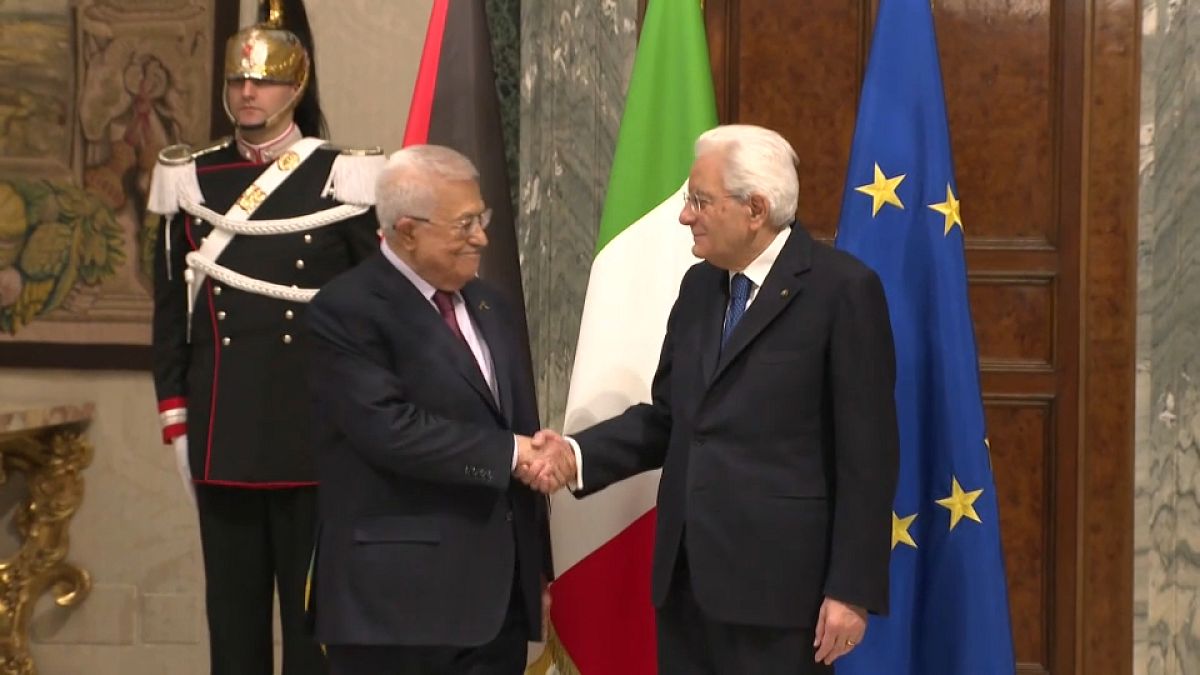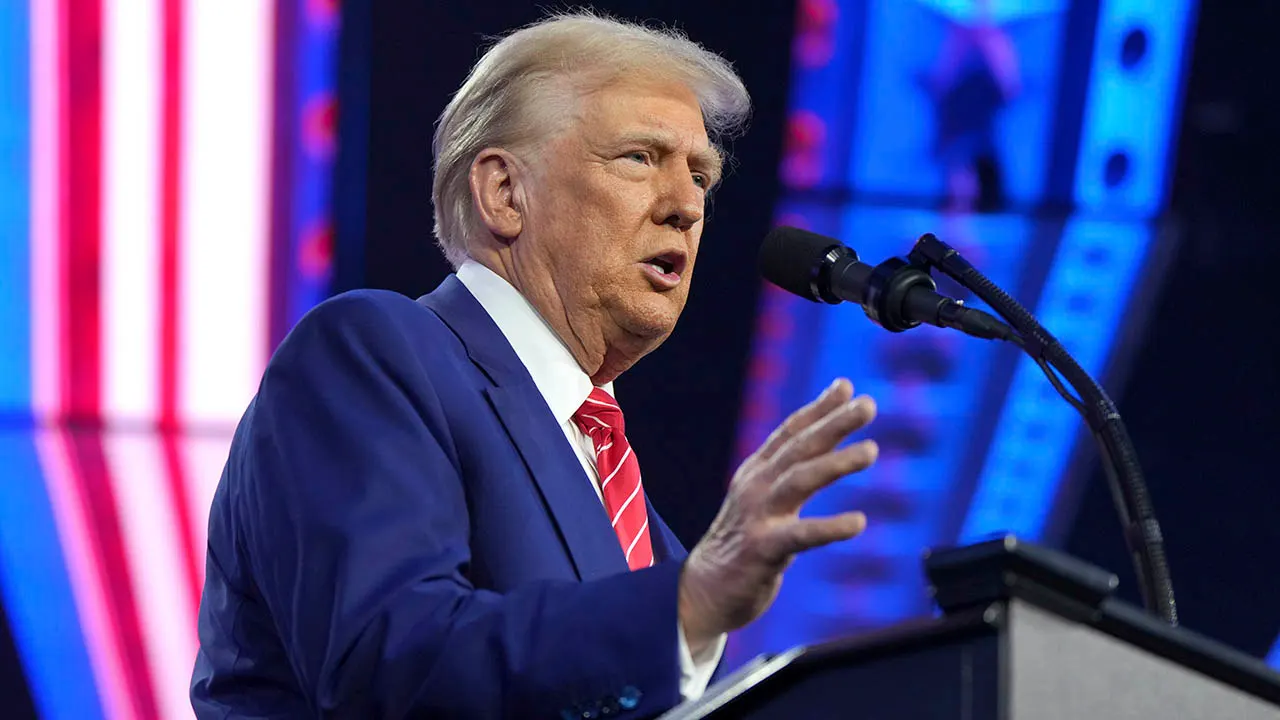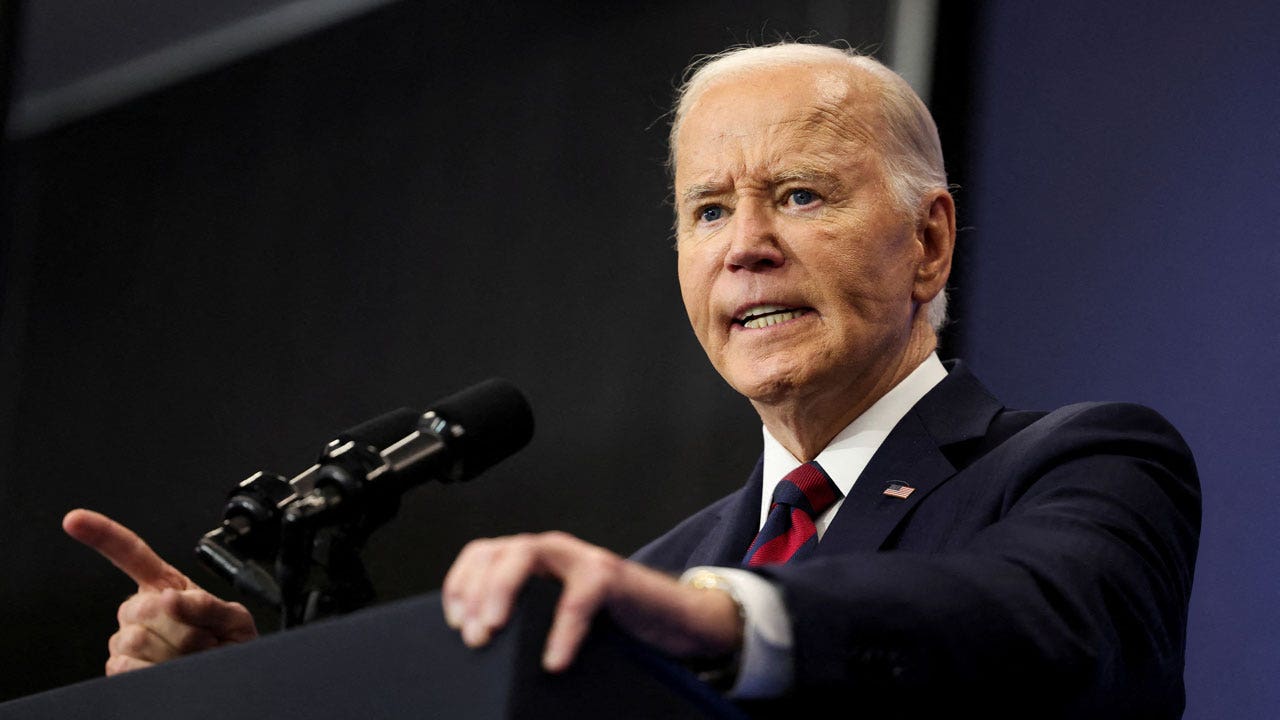World
More EU countries reclaim land from the mafia. Here’s how they use it

Italy was the first to pass a law to allow the reallocation of land for social purposes. Since then, several other countries have followed suit.
La Poesia looks much like a normal Italian trattoria. Bottles of Sicilian red wine line the rustic brick walls, tables are set with olive oil from Puglia, and gourmet classics like pasta all’amatriciana are served up in ceramics made in the Amalfi Coast.
But while the dishes at this Parisian restaurant taste just like you would expect, the ingredients used to make them have an unusual origin: much of the produce was grown on land in Italy seized from the mafia.
“We want this to be more than a restaurant,” says Baptiste Gaud, manager of La Poesia, which has also hosted music concerts, film screenings, and political talks since it opened in November 2022. “It is a gastronomic, ethical and cultural place.”
La Poesia, which sources much of its food and drinks from the Italian nonprofit Libera Terra (Free Land), is part of a burgeoning movement across Europe to reclaim and reuse land and goods once possessed by organised crime groups.
While governments worldwide have long enacted policies allowing the confiscation of criminal assets, only movable goods like cars and jewellery could be sold by the state, whereas land, difficult to legally reassign, has often been left unused.
But in 1996, Italy passed a pioneering law to allow the reallocation of land for social purposes.
“Governments were focused on selling confiscated goods,” says Tatiana Giannone, a specialist in confiscated assets for Libera, a civil society coalition that campaigned for the law. “But increasingly there is a move to reuse land and property, and to put it to use in the public good. Italy has really been the pioneer on this.”
Addiction treatment centre, nautical school …
According to a report published in March by Libera, more than 19,000 properties have been confiscated from groups like the Sicilian Mafia, the Calabrian ‘Ndrangheta and the Neapolitan Camorra to date, and there are 991 nonprofits running social reuse projects across the country. In Castel Volturno, near Naples, a cooperative is making mozzarella; in Genoa, a nonprofit runs a bicycle repair shop, and in Rome, there’s a jazz music venue, among many other examples.
But increasingly other European countries have begun to implement social reuse of confiscated property. As many as 19 nations have to some degree, including Spain, Belgium, Bulgaria, Romania and the Netherlands, according to a report by CHANCE, a European civil society network. “Social and public reuse of confiscated assets is one of the most important political and social innovations of recent years,” it concluded.
Near Alicante, in Spain, a villa confiscated from a drug trafficker has become an addiction treatment centre. In the Dutch city of Rotterdam, a boat once used to transport drugs is now a nautical school. In France, an apartment in Paris seized from an infamous gambler is now managed by a charity for victims of trafficking. And in Romania, four properties provide temporary shelter for vulnerable people.
At the European level, the work was started in 2013 when the European Parliament called on member states to consider “confiscation models” for assets derived from criminal activities and encouraged “the use of criminal assets for social purposes.” Then in May 2022, the European Commission presented a proposal for a new directive requiring member states to “consider the use of confiscated properties for public or social purposes.”
Advocates argue that the social reuse of confiscated goods not only makes use of land that would otherwise lie unused, but that it effectively engages communities against organised crime, making the anti-mafia efforts more resilient in the long term.
“Social reuse puts citizens at the heart of the fight against criminality,” says Fabrice Rizzoli, president of Crim’HALT, a French anti-mafia nonprofit that played a key role in the French government passing a law in 2021 for social reuse. “Before only the state had the right. But this changes our mentality. It’s up to us, the citizens.”
‘Still so far to go’
Yet progress has been slow. According to Europol, the EU’s agency for law enforcement cooperation**,** there are more than 5,000 organised crime groups operating across the bloc. Their illegal activities generate an estimated €110 billion a year. However, it found in 2021 only about 2% of these proceeds are frozen and 1.1% are confiscated.
“Things have moved fantastically,” says Anna Sergi, an expert in anti-mafia efforts in Europe and professor of criminology at the University of Essex. “But there is still so far to go. It can take years for an asset to be put to reuse. We need agencies to be set up to run and facilitate this process.”
Part of the issue has been the increasingly cross-border nature of organised crime in Europe, making it more difficult for authorities to prosecute. Some 7 out of 10 of criminal organisations in Europe operate in multiple states. But progress on that front was made in 2020, when legislation from the European Commission came into force allowing EU countries to mutually recognise confiscation orders.
“That was a success,” adds Sergi. “In the EU, you have borderless crime. It comes with the territory. So we need to have a fully European investigative model.”
But for now, projects like La Poesia are helping, one forkful of spaghetti at a time, to take power away from criminal groups across Europe and put it back in the hands of the people.
“The reaction has been so positive,” says Gaud. “Our customers love the idea when we explain our story and they are curious to know more.”

World
Justin Baldoni Sued by Former Publicist Amid Blake Lively Scandal

Justin Baldoni‘s former publicist sued him, his company and his current publicity team on Tuesday, amid a spiraling scandal over an alleged smear campaign against Baldoni’s “It Ends With Us” co-star Blake Lively.
Steph Jones, who owns Jonesworks, accused Baldoni of breaching their contract, which required him to pay her $25,000 per month. Baldoni dropped the firm in August, a few months into a year-long deal, after his Jonesworks publicist, Jennifer Abel, left the company to start her own publicity firm.
Jones also sued Abel and publicist Melissa Nathan, accusing them of implementing the smear campaign against Lively behind her back and without her knowledge. She alleges that they are now trying to blame her for the ensuing meltdown.
“To this day, Abel and Nathan continue to point the finger falsely at Jones now that their own misconduct is coming to light, and to defame and attack Jones in the industry,” the lawsuit states.
Lively filed a complaint on Saturday with the California Civil Rights Department, accusing Baldoni and his publicists of orchestrating negative coverage about her in retaliation for her complaints of sexual harassment on set.
In the complaint, Lively accused Baldoni of a catalog of sexually inappropriate comments and behavior that allegedly took place on set in 2023. According to the complaint, she raised these issues through her attorneys before filming, which had been suspended during the Hollywood strikes, resumed earlier this year.
The rift between Baldoni and Lively became apparent during the publicity tour for the film last summer. Baldoni feared that Lively or her team would public accuse him of sexual misconduct, and sought ways to combat that. The complaint quoted extensively from text messages among Baldoni’s publicity team, in which they plotted to “bury” Lively.
In an unusual move, Lively’s attorneys obtained the messages by sending a pre-litigation subpoena to Jones.
Abel, Nathan, and Baldoni are represented by attorney Bryan Freedman. On Monday, Freedman threatened to sue Jones for releasing the contents of Abel’s phone to Lively’s legal team. Freedman, Abel and Nathan did not immediately respond to a request for comment on Jones’ suit.
In her lawsuit, Jones relates that she “forensically preserved” Abel’s company phone after Abel was fired.
“Abel and Nathan’s covert take down and smear campaigns were revealed in black and white on Abel’s company-issued phone following her termination, which Jonesworks forensically preserved and examined in detail after receiving a subpoena for the phone’s contents,” Jones’ suit states. “Jones discovered the breadth and intensity of Abel and Nathan’s duplicity from these records, including that Abel was actively encouraging other Jonesworks clients and employees to leave Jonesworks while Abel was still employed there.”
Jones’ suit alleges that Abel conspired for months to leave her company and to “steal” her clients and trash her reputation in the industry. She accuses Nathan of encouraging Abel to leave, because Nathan would then have greater access to those clients.
“This scheme ultimately inflicted serious damage on Jones and Jonesworks,” states the lawsuit, which was filed in state court in New York.
Among other things, the suit alleges that Abel and Nathan planted negative stories about Jones in the press, including an article in Business Insider that was published last summer.
The suit alleges breach of contract, tortious interference with contract, breach of fiduciary duty and defamation.
World
Police officer dressed as the 'Grinch' steals Christmas spirit during drug bust

A Peruvian police officer dressed as the Grinch, the cantankerous and green-furred villain, busted suspected drug traffickers in the South American country’s capital days before Christmas.
The operation in San Bartolo in Lima resulted in the arrest of three suspects, according to a video posted online by the Peruvian National Police.
“In an ingenious operation, agents of the Green Squad arrested the aliases La Reina del Sur, La Coneja and Pote, alleged members of the La Mafia de San Bartolo gang, dedicated to drug dealing,” a police post on X states. “Various narcotics were seized.”
FLORIDA MAN WHO WAS HALF-NAKED, ‘HIGH ON METH’ BREAKS INTO HOME, GRABS CARPET CLEANER
The “Grinch” posing with suspected drug traffickers. A Peruvian police officer dressed as the Christmas villain helped bust the alleged traffickers. (Peru National Police)
Using what appeared to be a sledgehammer, the officer walked down the street dressed as the infamous Christmas villain with a small heart before breaking down the front door of a home and entering, according to the video footage.
The suspects were arrested, and the “Grinch” is seen rummaging through various items in the home before finding what authorities said were illegal drugs and other items related to drug trafficking.
MORE THAN $31M OF METH CONCEALED IN SHIPMENT OF PEPPERS SEIZED AT TEXAS-MEXICO BORDER

A Peruvian police officer dressed as the “Grinch” on his way to bust suspected drug traffickers. (Peru National Police )
Peru is the second-largest producer of cocaine and cultivator of coca in the world, according to the State Department.
“The majority of cocaine produced in Peru is transported to South American countries for domestic consumption, or for onward shipment to Europe, the United States, East Asia, and Mexico,” the State Department website said.
Peru’s national police force has carried out similar operations in the past.

The “Grinch” busting down a door (Peru National Police)
On Halloween 2023, officers disguised as horror favorites Freddy Krueger, Jason Voorhees and Tiffany Valentine, the murderous doll in the “Child’s Play” series, also broke into the home of alleged drug dealers.
World
Are your Christmas gifts ready? Here are where EU toys come from

While the EU saw a drop in toy exports, China was the EU’s biggest supplier, providing 80% of these imports, valued at €5.2 billion.
In 2023, the EU imported €6.5 billion worth of toys from countries outside the bloc, a €2 billion decrease compared to 2022.
According to the latest Eurostat figures, China was the EU’s biggest supplier, providing 80% of these imports, valued at €5.2 billion.
Vietnam followed with 6% and the United Kingdom with 2%.
Around a fifth of the EU’s toy imports ended up in Germany, while France and the Netherlands received 16% and 14%, respectively.
At the same time, the EU exported €2.3 billion worth of toys in 2023.
This figure represents a slight decrease of €0.2 billion from the previous year.
More than half of the toys exported from the EU came from the Czech Republic, Germany and Belgium.
The UK was the top destination for EU toy exports, receiving 30% of the total, followed by Switzerland at 13% and the United States at 10%.
Concerns over toy safety
A recent Toy Industries of Europe study revealed that 80% of toys purchased from third-party sellers on online marketplaces failed to meet EU safety standards.
The research tested over 100 toys from various platforms, uncovering serious health risks such as choking hazards and toxic chemicals.
At the beginning of September, the European Parliament backed a proposal to improve the safety of toys available on the EU market.
The proposal focused particularly on decreasing the number of unsafe toys in the EU market and better protecting children from toy-related risks, including banning harmful chemicals in toys.
-

 Business1 week ago
Business1 week agoFreddie Freeman's World Series walk-off grand slam baseball sells at auction for $1.56 million
-
/cdn.vox-cdn.com/uploads/chorus_asset/file/23951353/STK043_VRG_Illo_N_Barclay_3_Meta.jpg)
/cdn.vox-cdn.com/uploads/chorus_asset/file/23951353/STK043_VRG_Illo_N_Barclay_3_Meta.jpg) Technology1 week ago
Technology1 week agoMeta’s Instagram boss: who posted something matters more in the AI age
-
/cdn.vox-cdn.com/uploads/chorus_asset/file/24924653/236780_Google_AntiTrust_Trial_Custom_Art_CVirginia__0003_1.png)
/cdn.vox-cdn.com/uploads/chorus_asset/file/24924653/236780_Google_AntiTrust_Trial_Custom_Art_CVirginia__0003_1.png) Technology4 days ago
Technology4 days agoGoogle’s counteroffer to the government trying to break it up is unbundling Android apps
-
News1 week ago
East’s wintry mix could make travel dicey. And yes, that was a tornado in Calif.
-

 News5 days ago
News5 days agoNovo Nordisk shares tumble as weight-loss drug trial data disappoints
-

 Politics5 days ago
Politics5 days agoIllegal immigrant sexually abused child in the U.S. after being removed from the country five times
-

 Entertainment5 days ago
Entertainment5 days ago'It's a little holiday gift': Inside the Weeknd's free Santa Monica show for his biggest fans
-

 Politics1 week ago
Politics1 week agoTrump taps Richard Grenell as presidential envoy for special missions, Edward S. Walsh as Ireland ambassador



















